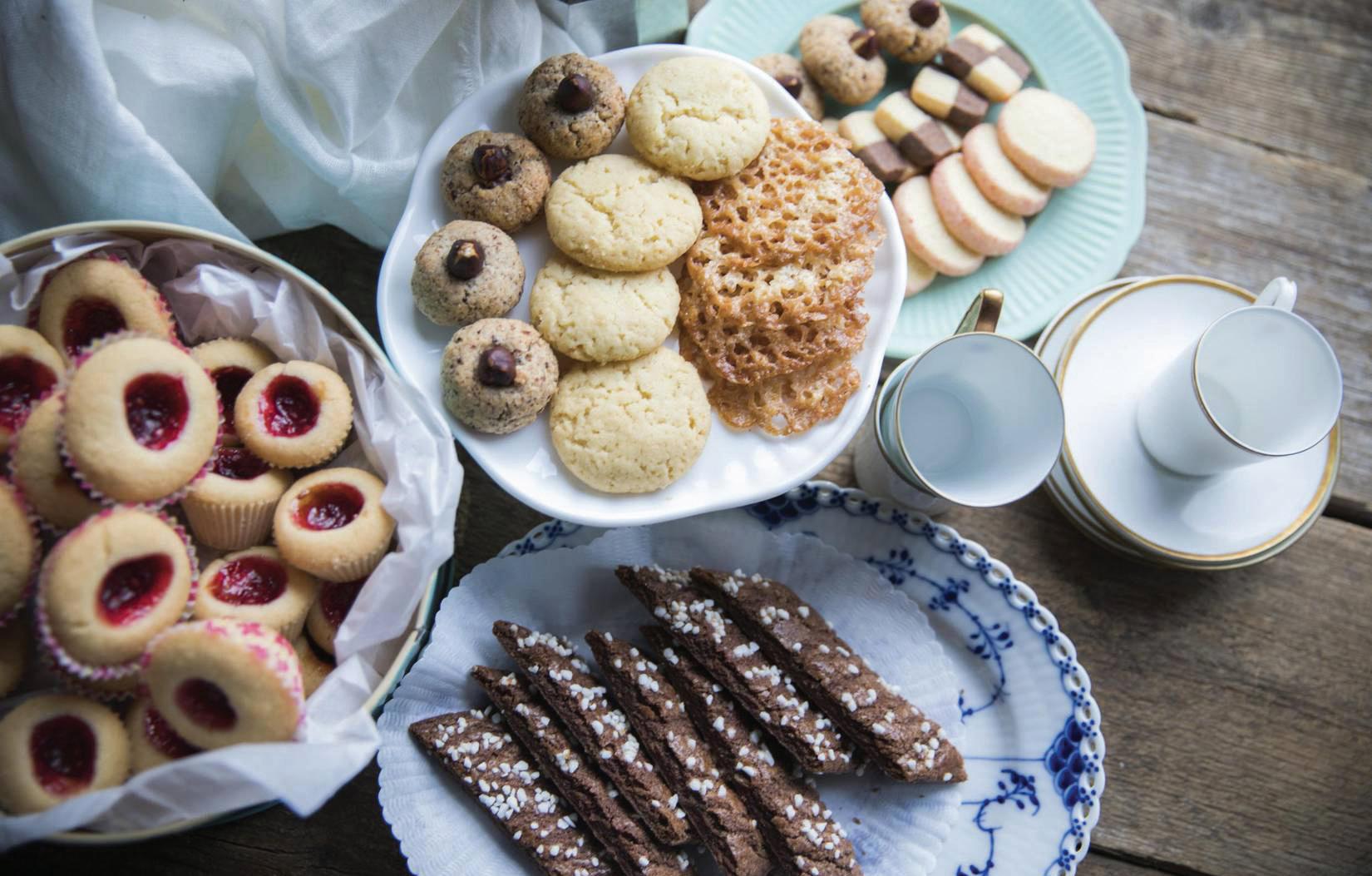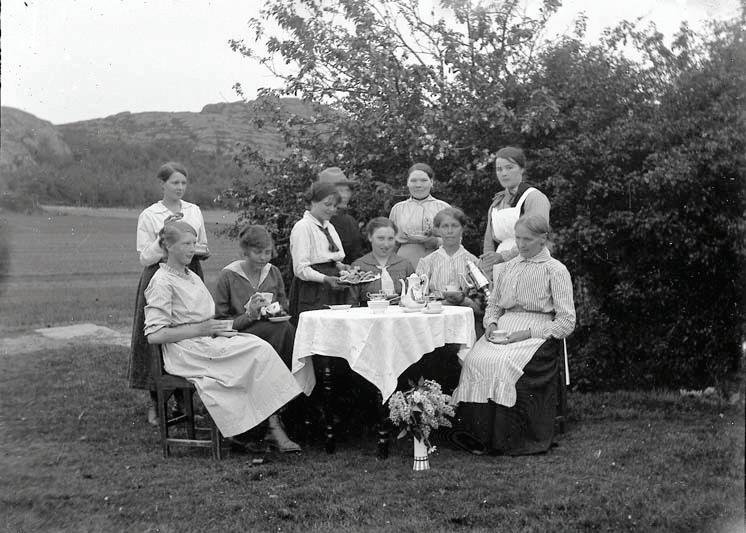
2 minute read
Treats: Seven Types of Cookies A Mouthwatering History
Hemma hos
Seven Types of Cookies – A Mouthwatering History
In its simplest form, a kafferep is a private gathering involving coffee and “sju sorters kakor” (seven types of cookies). Historically, there is of course a lot more to it. Here’s how to recreate one of Sweden’s most delicious customs. By Kajsa Norman
No doubt, most of our readers are familiar with fika, the daily Swedish routine of pausing for coffee, a treat, and some social interaction with friends or colleagues. Today, it is a very informal affair. However, this wasn’t always the case. Kafferep, the precursor to fika is an elaborate art dating back to the 1700s when Sweden was still a formal and hierarchical society. Back then, only the finest china was good enough and the guests were seated and ranked according to importance.
In the 18th century, coffee houses first started popping up in Swedish cities, but they were only accessible to men. Barred from public life, women began organizing their own exclusive coffee gatherings in their homes. Like the beverage of coffee itself, these gatherings were initially reserved for the upper classes. However, as coffee became more widely available the tradition spread from the higher ranks to all levels of society. During the mid-1900s, sugar became more affordable and wheat easier to come by, leading to a further gentrification of baked goods.
The origin of the expression kafferep is not entirely clear, but the “ rep” suffix is believed to stem either from participants ripping and repairing cloth while getting together, or from the Swedish word repartisera, meaning “to share”, as participants originally contributed their own baked goods. While attending a kafferep would have been an exciting social event for many women, it was far from a relaxed affair. It was as much an opportunity to show off one’s culinary skills, finest china, and mastery of the custom as it was to socialize.
By the early 1900s, the social conventions surrounding the kafferep were so firmly established that several books had been written to help women successfully host and attend a kafferep.
“Use the finest china, cups and saucers, sugar and cream…. [and] The finest tablecloth, preferably with accompanying napkins. Dress up with a hat or a nice cardigan and silkblouse…” advised Husmodern magazine in 1934, which also provided guidance on the seating arrangement: “The hostess places the top ladies on each side and the others by rank.” The status of a woman’s husband determined her rank and hence where she was seated. Unmarried women always ranked last, even if they had status in their own right. For example, Nobel Prize-winning Swedish author Selma Lagerlöf, who was unmarried, had to wait until all the mar-
Treats[ ]

Come over for a cup of coffee! The finest china was used and there were at least seven types of cookies served. Photo: Tina Axelsson/Visit Sweden.
Women having kafferep in the garden. Photo: Johan Johansson/Digitalmuseum.











